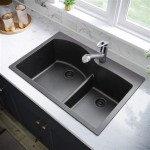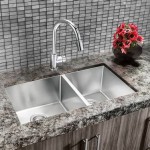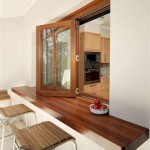Modern Kitchen Islands For Small Spaces
The kitchen island has evolved from a luxury reserved for expansive kitchens to a versatile and essential feature in modern homes, even those with limited square footage. A well-planned kitchen island can significantly enhance functionality, storage, and overall aesthetics. When space is at a premium, careful consideration of design, dimensions, and integrated features is crucial to maximize the island's contribution to the kitchen's efficiency and visual appeal.
Selecting the appropriate island for a small kitchen requires a thorough assessment of the available space. Precise measurements of the kitchen area, including walkways and clearances around existing appliances and countertops, are paramount. The island should not impede the flow of traffic or create bottlenecks within the kitchen. A general guideline suggests maintaining at least 36 inches of clearance around the island’s perimeter, ideally increasing to 42-48 inches in high-traffic areas or around appliances like dishwashers and refrigerators.
Choosing the correct size and shape is a key factor. Long, narrow islands often prove more effective than square or overly wide ones, as they can be positioned to run parallel to the primary work area without overwhelming the space. Consider the island's intended purpose – is it primarily for food preparation, additional countertop space, casual dining, or storage? This will influence the dimensions and features incorporated into the design.
Prioritizing Multi-Functionality and Storage
In small kitchens, every inch counts, making multi-functional design a necessity. A kitchen island should serve more than one purpose to justify its footprint. Integrated storage solutions are essential for maximizing the island’s utility. Drawers, cabinets, open shelving, and pull-out organizers can effectively house cookware, utensils, small appliances, and even pantry staples.
One popular option is to incorporate deep drawers for pots and pans, eliminating the need to rummage through cluttered cabinets. Open shelving can provide easy access to frequently used items like cookbooks, mixing bowls, or decorative elements. Roll-out shelves within cabinets maximize storage capacity and improve accessibility, preventing items from being lost in the back. Installing a narrow pull-out spice rack or a knife block can declutter countertops and keep essential tools within reach.
Beyond storage, consider incorporating other functions into the island. A built-in cutting board provides a dedicated food preparation area, freeing up counter space. A drop-leaf extension can instantly expand the island's surface area when needed for larger tasks or gatherings, then be folded down when not in use. A breakfast bar with comfortable seating is ideal for casual meals or morning coffee, eliminating the need for a separate dining table.
Another approach to maximizing functionality is to integrate appliances into the island. A compact dishwasher drawer can save valuable space compared to a full-sized dishwasher. A built-in microwave or warming drawer can free up counter space and streamline meal preparation. A small wine refrigerator or beverage center offers convenient access to drinks without taking up valuable refrigerator space.
Selecting the Right Materials and Finishes
The materials and finishes selected for the kitchen island play a crucial role in both its appearance and durability. In a small kitchen, it’s important to choose materials that are visually appealing and complement the overall design scheme while also being practical and easy to maintain. Light colors and reflective surfaces can help to make the space feel larger and brighter. Darker hues can be used strategically to add contrast and visual interest, but should be balanced with lighter elements to avoid overwhelming the space.
The countertop material is a key consideration. Quartz is a popular choice due to its durability, low maintenance, and wide range of colors and patterns. It is non-porous, making it resistant to stains, scratches, and bacteria. Granite is another durable option, offering natural beauty and heat resistance. However, it requires regular sealing to prevent staining. Butcher block countertops provide a warm, natural aesthetic and are ideal for food preparation, but they require regular oiling to maintain their moisture content and prevent cracking.
The island's base can be constructed from a variety of materials, including wood, metal, and laminate. Wood provides a classic and timeless look, but it requires proper sealing and finishing to protect it from moisture and damage. Metal accents can add a modern and industrial touch, while laminate is a cost-effective and durable option that is available in a wide range of colors and textures.
The hardware chosen for the island, such as knobs, pulls, and handles, can also have a significant impact on its overall appearance. Sleek, minimalist hardware can complement a modern design, while more ornate hardware can add character and charm to a traditional kitchen. Consider the functionality of the hardware as well, selecting pieces that are comfortable to grip and easy to use.
Lighting is another crucial element to consider. Pendant lights hung above the island can provide task lighting for food preparation and create a focal point in the kitchen. Under-cabinet lighting can illuminate the countertop and highlight storage areas. Consider adding dimmers to adjust the lighting to suit different needs and moods.
Optimizing Space with Strategic Design Choices
Beyond the selection of materials and features, strategic design choices can further optimize space in a small kitchen with an island. One effective technique is to use the island as a visual divider, separating the kitchen from an adjacent living or dining area. This can help to define the kitchen space and create a sense of separation without completely closing it off.
Consider the shape of the island. A curved or angled island can create a softer, more organic feel than a traditional rectangular island. This can be particularly effective in a small kitchen, where hard angles can feel overwhelming. A peninsula island, which is attached to an existing wall or countertop, can also be a good option for maximizing space, as it requires less floor space than a freestanding island.
Another design consideration is the height of the island. A higher island can provide a more comfortable working height for taller individuals, while a lower island can be more accessible for children or individuals with mobility issues. A two-tiered island, with one section at counter height and another section at bar height, can provide both a comfortable working surface and a casual dining area.
Think about the placement of the island in relation to other kitchen elements. Ensure that there is adequate clearance between the island and the surrounding cabinets, appliances, and walls. Avoid placing the island in a location that obstructs walkways or blocks access to essential kitchen features. Consider the flow of traffic through the kitchen and position the island to facilitate movement and efficiency.
Incorporating open space beneath the island can also help to create a sense of lightness and airiness. This can be achieved by using legs or a minimalist base instead of a solid cabinet. This design choice can also make it easier to clean the floor around the island.
Finally, remember to consider the overall style and aesthetic of the kitchen. The island should complement the existing design elements and create a cohesive look. Whether you prefer a modern, minimalist style or a more traditional, rustic aesthetic, there are countless ways to incorporate a kitchen island into a small space without sacrificing functionality or style.
In summary, a kitchen island can be a valuable addition to a small kitchen, providing added storage, workspace, and seating. By carefully considering the size, shape, materials, and features of the island, it's possible to create a functional and stylish space that enhances the overall kitchen experience. Strategic design choices, such as prioritizing multi-functionality, integrating storage solutions, and optimizing the layout, are essential for maximizing the island's contribution to a small kitchen's efficiency and visual appeal.

34 Small Kitchen Island Ideas

Here S How To Fit An Island Into A Small Kitchen

24 Tiny Island Ideas For The Smart Modern Kitchen Decoist

16 Alternative Kitchen Island Ideas Kitchens Without Islands
:max_bytes(150000):strip_icc()/SF_SIMART_FEV2020-9230_BD-9aa984d60b2740db99eeb8966e917faa.jpeg?strip=all)
33 Small Kitchen Island Ideas To Optimize A Compact Space

34 Small Kitchen Island Ideas
:max_bytes(150000):strip_icc()/MichelleGersonUESKitchenPhotographerMarcoRicca-2aebd23874364a59a658be9588388a67.jpeg?strip=all)
33 Small Kitchen Island Ideas To Optimize A Compact Space

17 Small Kitchen Island Ideas That Maximize Prep And Storage

24 Tiny Island Ideas For The Smart Modern Kitchen Decoist

8 Stunning Modern Kitchen Island Designs For Your Home
Related Posts








